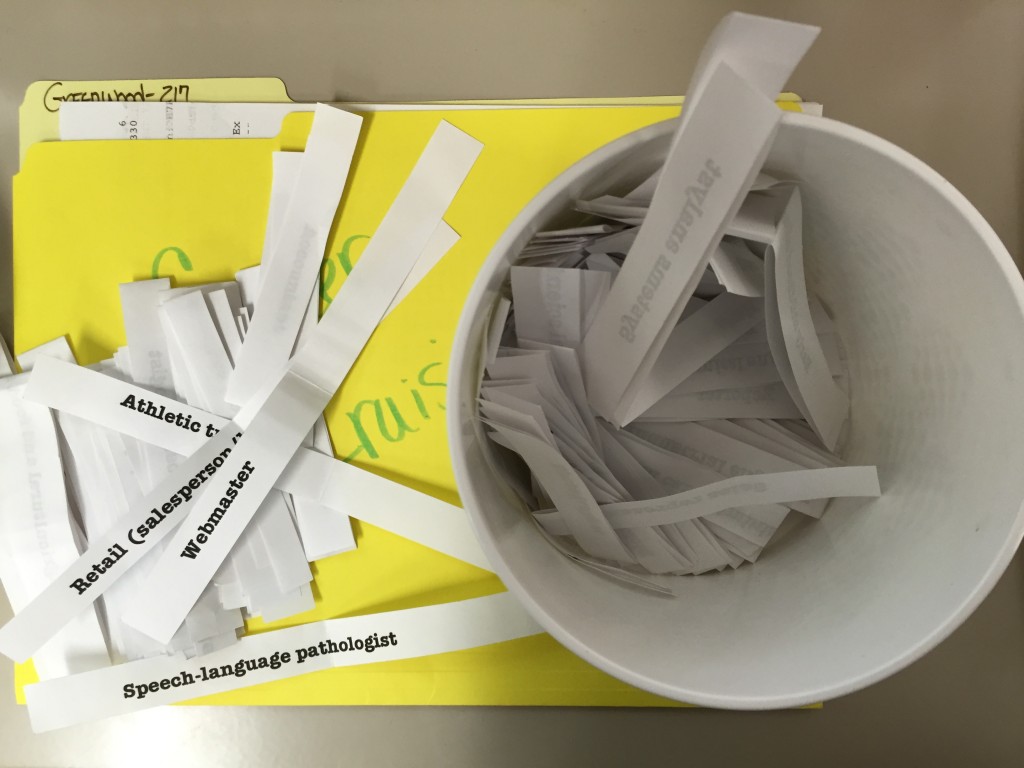Making Sense of Cents
“Ohmygod, ohmygod, ohmygod! Mrs. Greenwood – I’m going to make $15 and hour at this job. That’s good money, right?”
A few years back – probably more than a few years, truth be told – our district started incorporating career exploration into the curriculum, and for some reason, it was shunted to the English teachers because, you know, writing. “You can research careers! Have the kids create an essay!” enthused just about anyone who would talk about it. Reading an essay about being a marine biologist is challenging on the best days. Now expand that by ten kids, and you get the idea. The essays themselves became repetitive quickly, and quite frankly, I found them very unforgiving from a student’s point of view. What started off as giving the students a chance to explore careers had turned into yet another process essay, and all parties were frustrated. Three years ago, things started to change.
My kiddos had no concept of taxes or expenses or anything that comes with “adulting,” so we shifted our focus away from reading about careers and their job duties (hilarious word for middle schoolers, btw) to the nuts and bolts of the job: would you make a living wage and could you be happy doing it? The evolution of this has taken many twists and turns – and it’s always a work in progress – but I’m happy with where we’re headed.
Basically, I used to walk around the room with my phone and do some quick calculations on the calculator. First of all, they had no concept of what an hourly wage meant in the big picture, so we would chat about how many hours they wanted to work. It usually ranged between 25 and 35, but they would often listen to reason and went with 40. Next, taxes – no one had heard about taxes, or at least they feigned ignorance. That was the easy part. Subtracting out all the “luxuries” like housing and food and utilities became cumbersome after the first three or four kids, so I decided to streamline things and created a spreadsheet that they could edit and make decisions about based on their chosen careers.
When we first started this, I allowed the kids to choose their own careers, but since everyone wanted to be either a video game developer, professional athlete, or singer, I stopped and told them they were going to pick. Semantics is everything in the middle school setting, and picking meant putting your hand into the lovely container and picking a piece of paper. Part of this is to maintain some level of sanity, but I really wanted them to be exposed to a variety of careers. Never heard of a resource management specialist? Awesome . . . go do some exploration!
The spreadsheets now come based on the level of degree that you would need: none, two-year or specialty school, four-year bachelor’s degree, or advanced professional. Within that range, I have formulated the spreadsheets to take out percentages for taxes, housing, health insurance, savings, utilities, car payments (including insurance and gas), and student loans. The only thing I leave optional is the food budget. The students choose what they want for food. Some quickly realize that they might be on the Raman noodle every night budget, and some decide that eating out once or twice a week might be in their cards. Usually, I have three or four kids per class that are in the red before they even get to their food budget, and when that happens, I tell them they can come to my house for a spaghetti dinner once a week. If in seven or eight years, young adults start turning up on my doorstep looking for some of my “fantastic” sauce (hint: it’s store bought), I’ll know that they were at least paying attention a little bit.
This year, I experimented with a Fast Forward, by introducing down payments for homes and saving for vacations. In previous years, we never factored in the money that you would need to furnish a home, what to budget for clothing, or how much money a pet would cost, so that was also included this year. All in all, I would love to develop this further by coming up with ways for students to assess what happens when life throws you a curve ball or two, but I’m still trying to figure it all out. We normally create infographics about the career and what you can expect, but I opted to spend more time on the financial side of their jobs. I’m pretty sure that I’m going to continue heading down this path since I think my kids get more out of it.
Suggestions going forward? I’d love to hear if you have tried something like this in the past with your classes.
